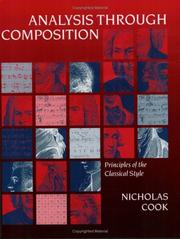Assignment 25: Here Mozart has written only the first half of a minuet, but he has provided three alternative bass lines of increasing complexity. ... Add inner parts to each version, basing what you write on Mozart’s figures, and complete the minuet.
Assignment 35: ... Example 77 shows all that exists of [a] piece ... written in Leopold Mozart’s hand. ... It was presumably intended to have a second half. ... Construct a second half by using the same materials in the same order as in the first half, transposed as necessary. You need only write two new bars of music: a second-time bar for the first half ... and the final bar of the second half.
Assignment 47: Example 105 is the first half of a sonata movement by Antonio Soler, a Spanish composer who died in 1783. The original is in a fully-fledged sonata form as described in this chapter. Try to reconstruct it. ... [T]here is no need to write out all the music that is simply transposed from the first half, but you should say whether it is to be transposed up or down.
Check nearby libraries
Buy this book

Last edited by ultra boom
February 16, 2024 | History
Nicholas Cook's Analysis Through Composition: Principles of the Classical Style, is a first: a manual of classical-style composition that thoroughly and explicitly incorporates the treatises, exercises, arrangements, compositional sketches, and fragments left behind by eighteenth-century composers
Check nearby libraries
Buy this book

Showing 2 featured editions. View all 2 editions?
| Edition | Availability |
|---|---|
|
1
Analysis through composition: principles of the Classical style
1996, Oxford University Press
in English
0198790139 9780198790136
|
aaaa
Libraries near you:
WorldCat
|
|
2
Analysis Through Composition: Principles of the Classical Style
Publisher unknown
Hardcover
0198790147 9780198790143
|
zzzz
Libraries near you:
WorldCat
|
Book Details
Table of Contents
Introduction.
A page of music
Page 1
I.
Harmony and texture
Page 13
1.
Arrangement
Page 15
2.
Accompaniment
Page 29
II.
Harmony and line
Page 41
3.
Melody and bass
Page 43
4.
Modulation and chromaticism
Page 53
5.
A lesson from Mozart
Page 66
III.
Variation and expansion
Page 79
6.
Varying a line
Page 82
7.
Keyboard variation
Page 94
8.
The classic composer's workshop
Page 109
9.
Cadenzas
Page 119
IV.
Sonata
Page 143
10.
The complementation of dance and fantasy
Page 146
11.
Three into two will go
Page 157
12.
A sonata in the making
Page 183
Conclusion.
196
Appendix 1.
A checklist of classical harmony
Page 198
Appendix 2.
Instrumental ranges
Page 199
Glossary.
200
Worksheets.
205
Edition Notes
Classifications
The Physical Object
ID Numbers
Excerpts
added by ultra boom.
Community Reviews (0)
Feedback?| February 16, 2024 | Edited by ultra boom | Edited without comment. |
| February 16, 2024 | Edited by ultra boom | Edited without comment. |
| November 18, 2020 | Edited by MARC Bot | import existing book |
| July 31, 2020 | Edited by ImportBot | import existing book |
| December 9, 2009 | Created by WorkBot | add works page |










